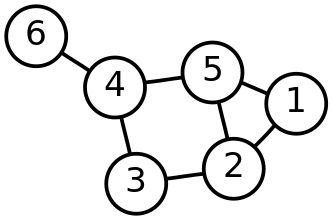In Mathematics, a Graph is an abstraction for modeling relationships between things. It is no different from a Network, which is a more common term for describing the same thing. Graphs consists of nodes and edges, or things and the ways that things relate to each other. As it turns out, Graphs are very powerful modeling tools for modeling natural and man-made systems. Diverse things like the Web, power grids, economies and even cells can be represented and analyzed as networks.
Note: Images above are from the Visual Complexity Gallery
What is also remarkable is that a lot can be said about a graph by looking at its structure; and the evolution of the structure. For example, epidemiologists use graph structures to predict the spread of an epidemic. The very same model can be used to understand how wild fire spreads, as well as how to engineer a viral marketing campaign. The better we understand the structure of a system's graph, the more we can control it, predict it and analyze it.
 Alphachimp
Alphachimp  Sunday, January 27, 2008 at 3:57PM
Sunday, January 27, 2008 at 3:57PM  The power and flexibility of a network--whether a simple group of casual neighbors or a complex next generation communication network--depends not just on the number of connections, but on the quality of the nodes, and more important, the type of nodes. Below is a fantastic intro to the concept of graphs and networks. It helps in understanding the a social graph and how it differs from a social network.
The power and flexibility of a network--whether a simple group of casual neighbors or a complex next generation communication network--depends not just on the number of connections, but on the quality of the nodes, and more important, the type of nodes. Below is a fantastic intro to the concept of graphs and networks. It helps in understanding the a social graph and how it differs from a social network. 






Reader Comments